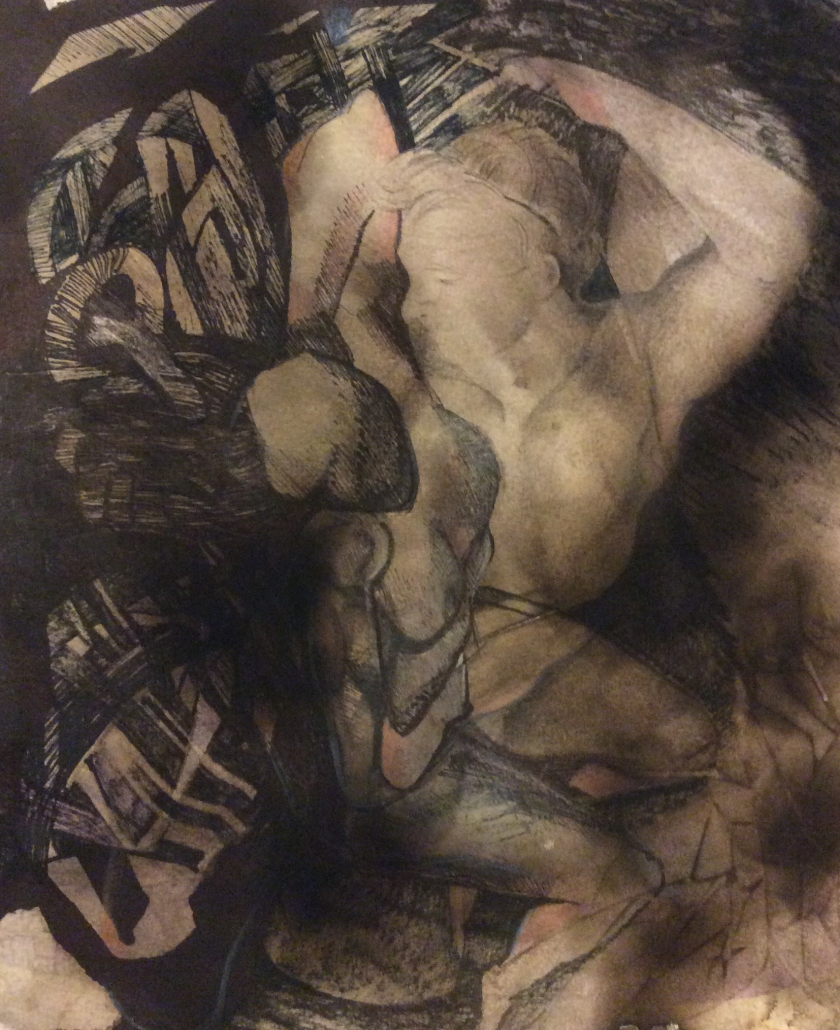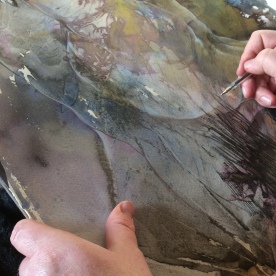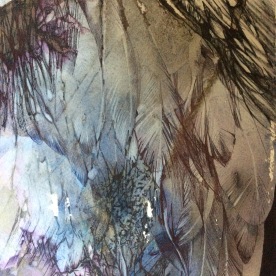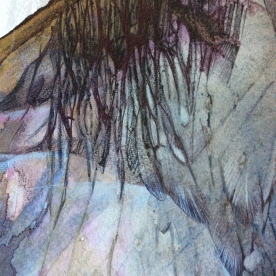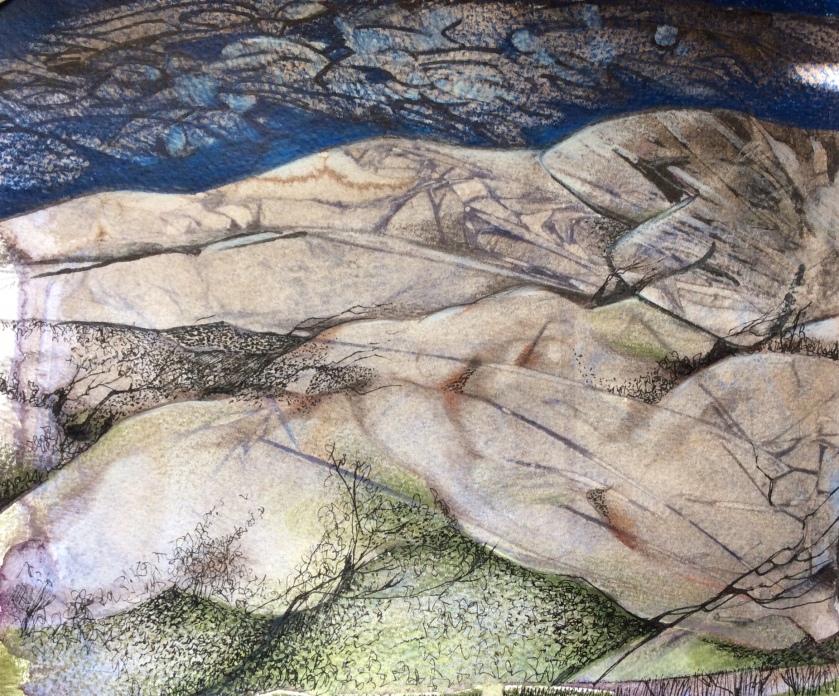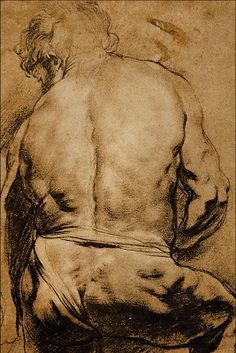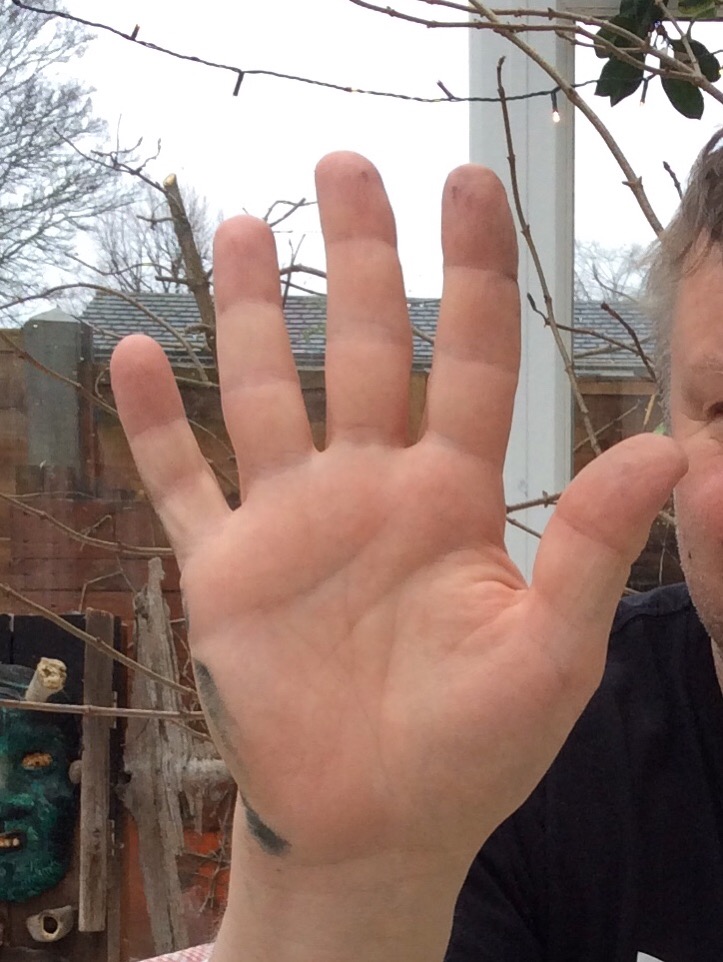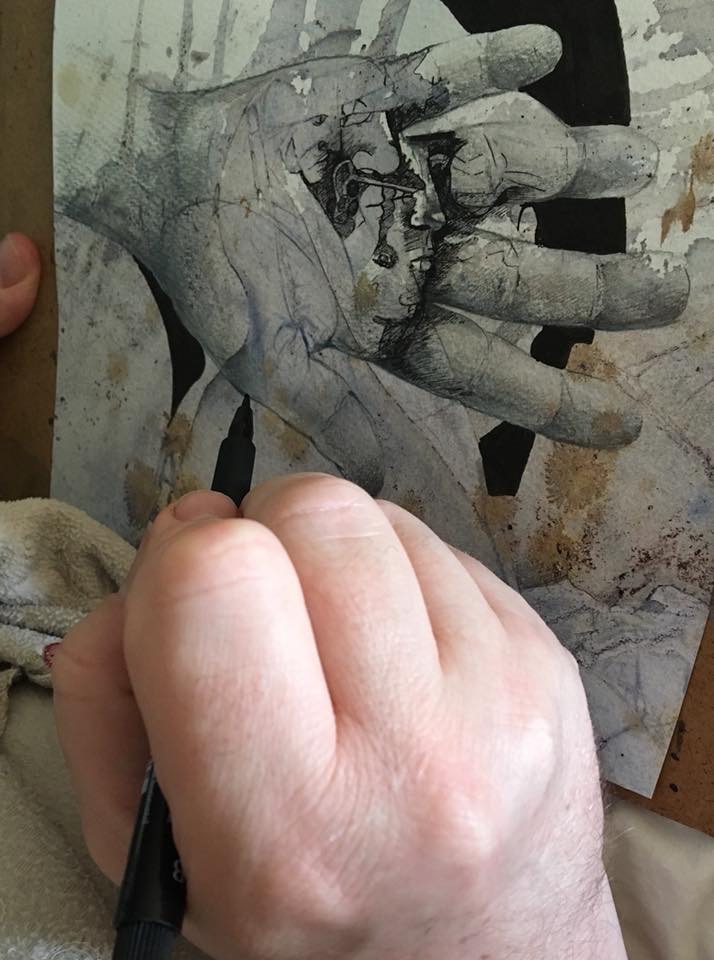
‘The Firebird’ watercolour, ink and pencil on monoprint
This particular painting has taken us on quite a journey. We had planned to begin a diptych of Adam and Eve, but the woman staring back at us simply suggested something else. We went with it and reserve our initial intentions for another day…
Here are a few stages in her development. She was drawn on a full sized piece of St Cuthberts Mill Bockingford paper that had been monoprinted with ink and watercolour. Lorna referenced Rossetti in her initial drawing; the classic freshness of her face and gripping gaze was a good place to start. We had also been researching traditional Adam and Eve imagery and Stephen began to work into the hair using Dürer as a marker. The combined elements and strong colour took us on an exciting tangent and after several sessions in the studio, our Firebird gradually emerge instead.
For us it’s important to maintain an open approach to our work and the resulting subject matter, it’s essential in fact. We work with what the image dictates and respond to each other’s marks. We sometimes have a firm idea, but have learned that that can often change; each painting has its own story to tell and we embrace the journey they take us on. One of the many wonderful things about working collaboratively is that the development unfolds with at a pace that is challenging and reactive to each other’s marks. We can be both subjective and objective at the same time. Each piece is deeply cognitive, full of discussion and debate with complete equality in direction.




